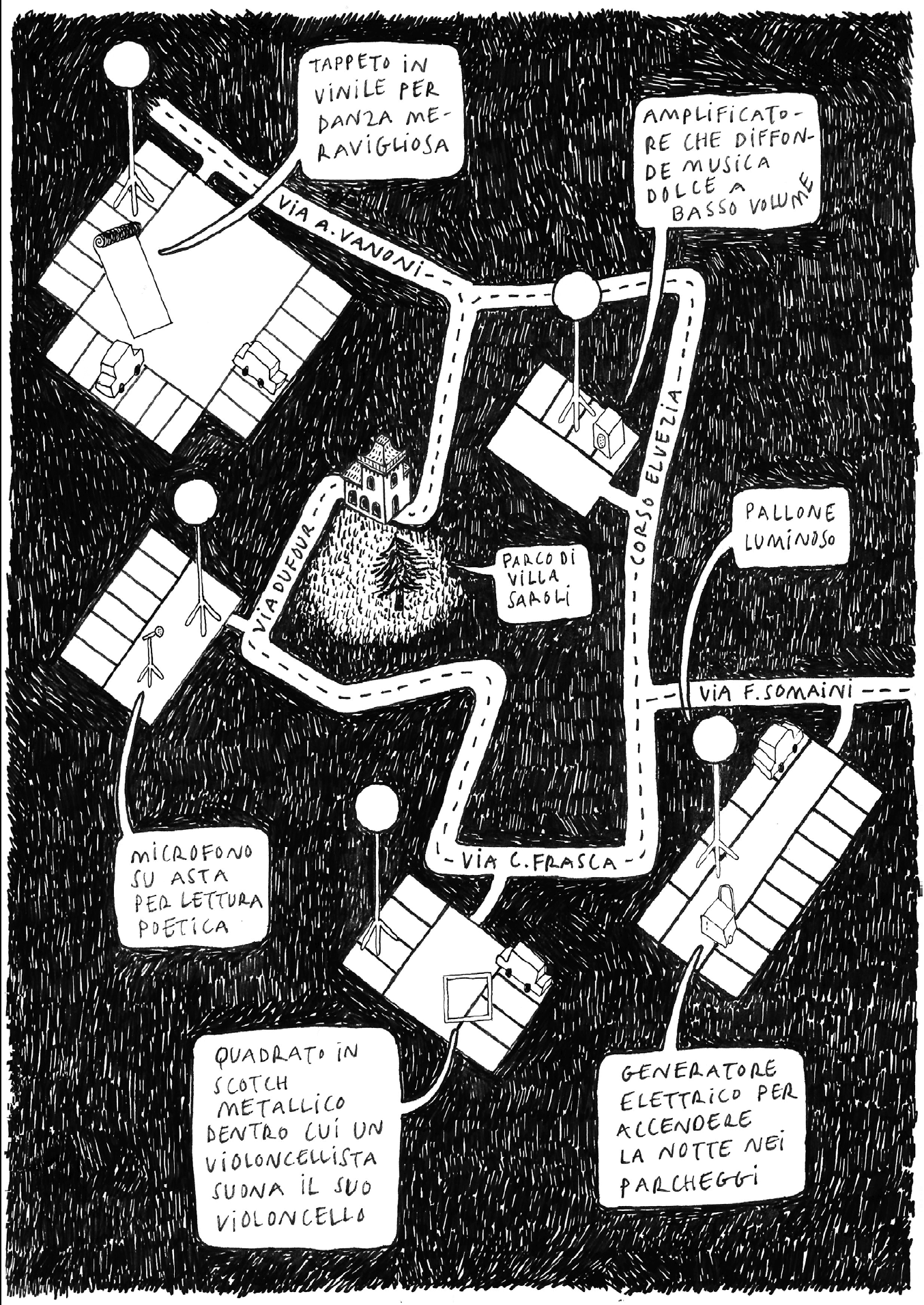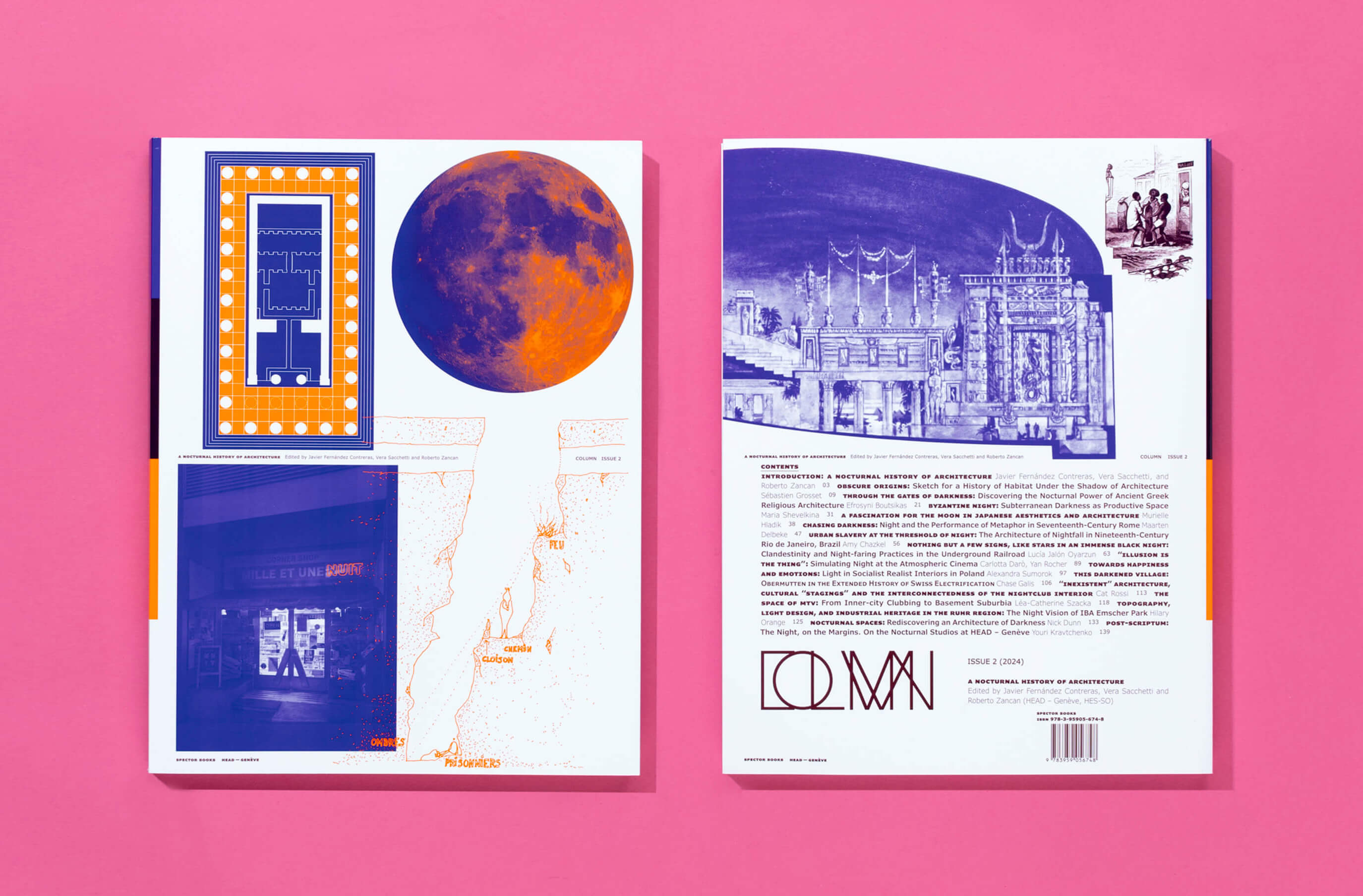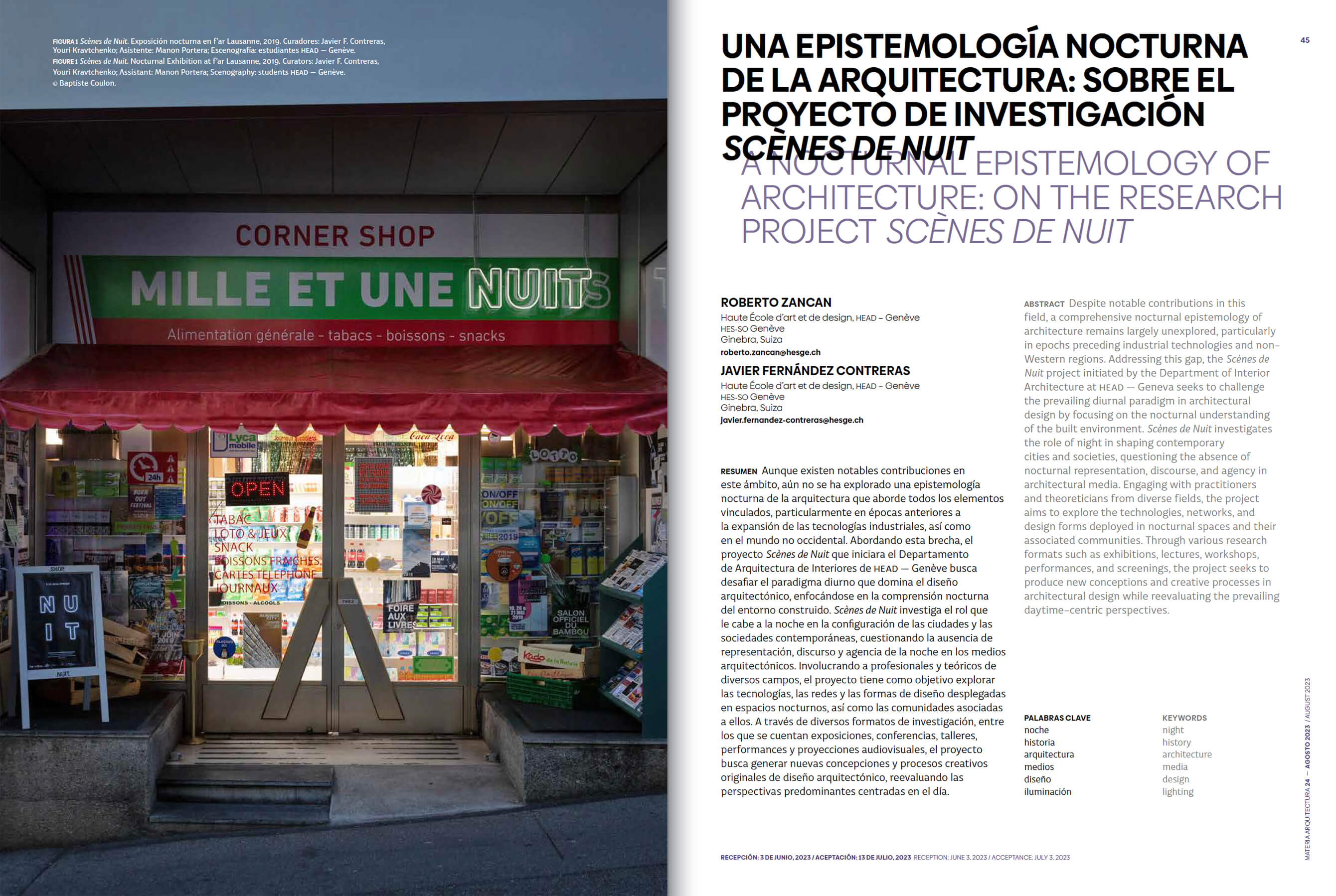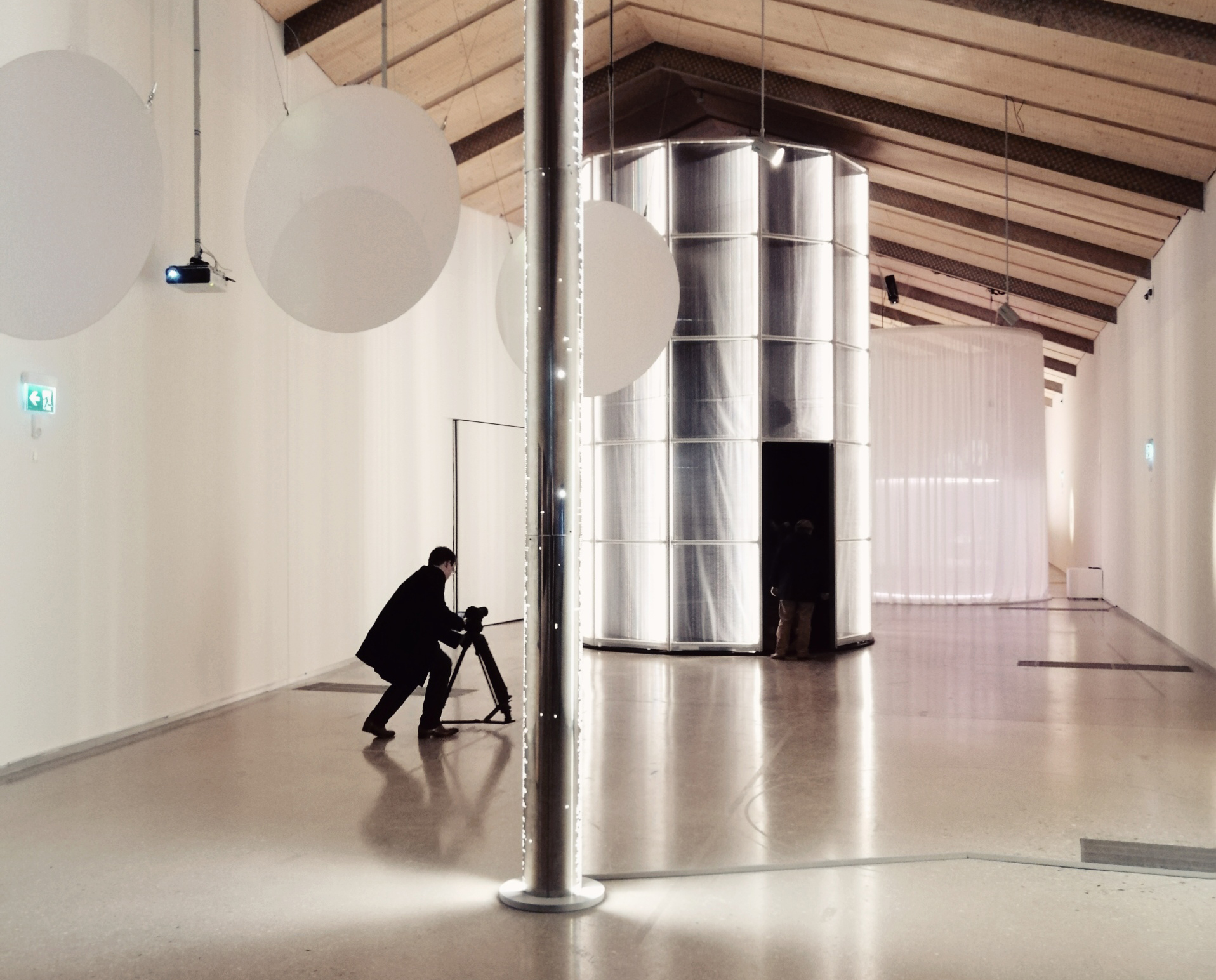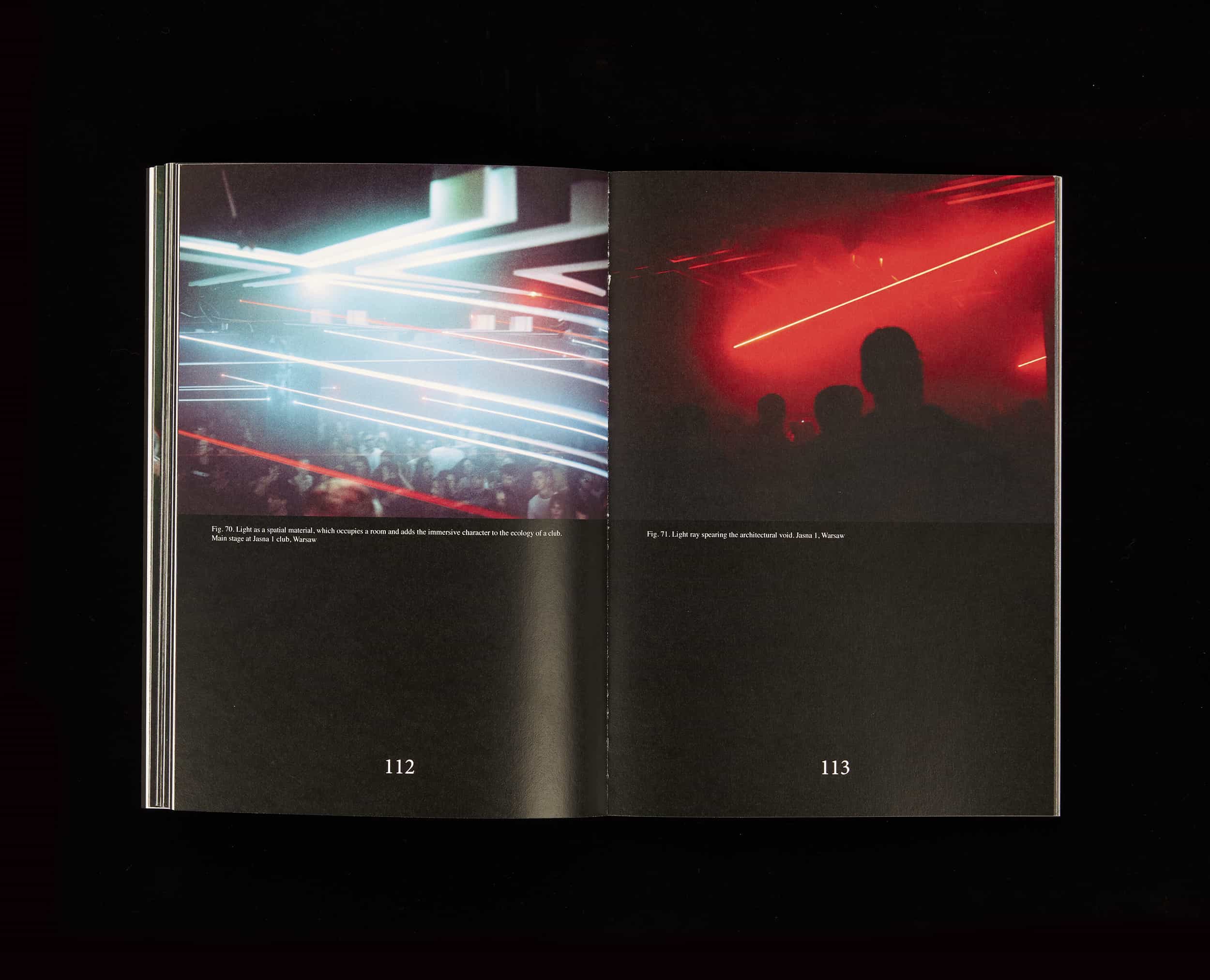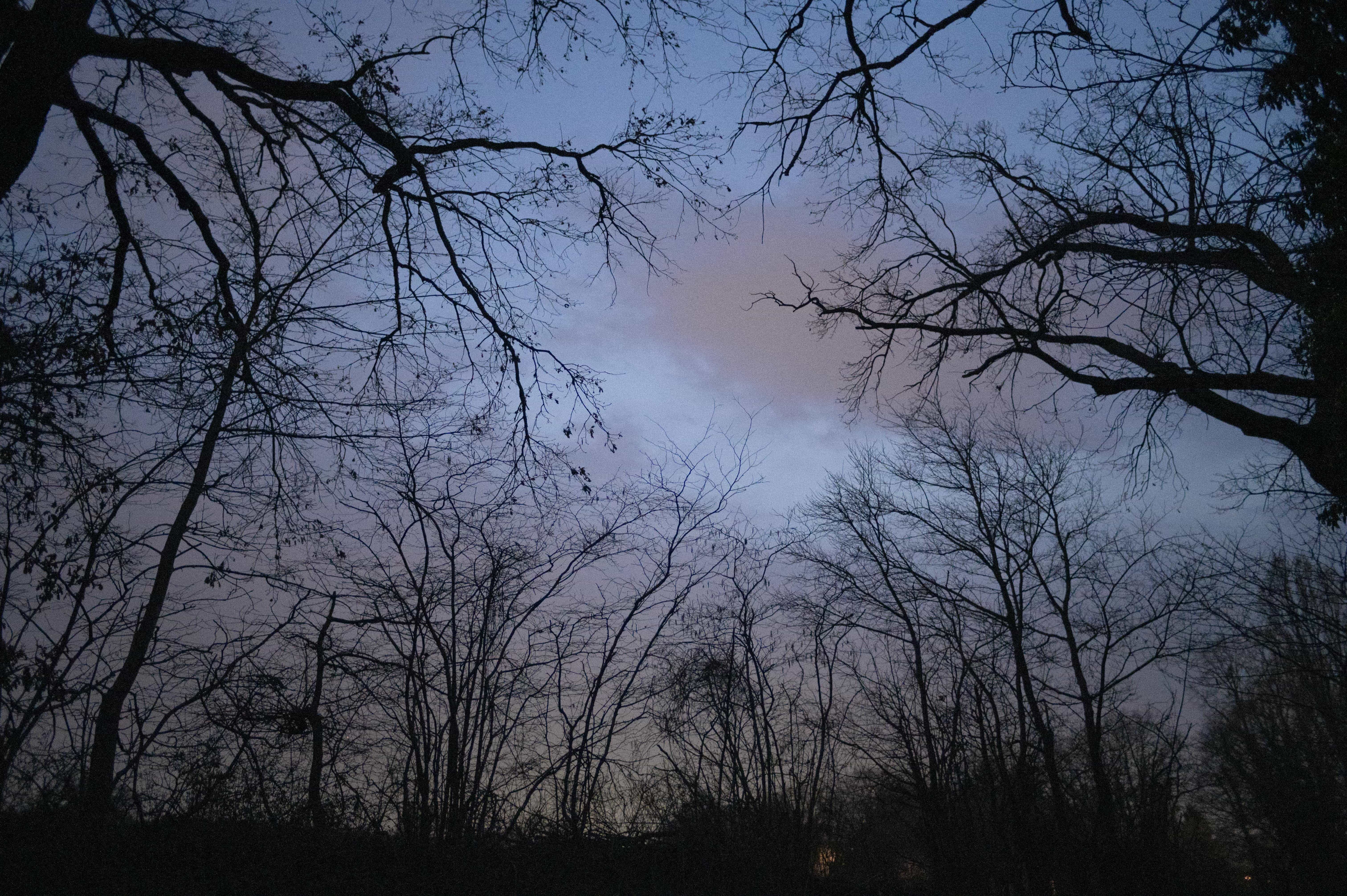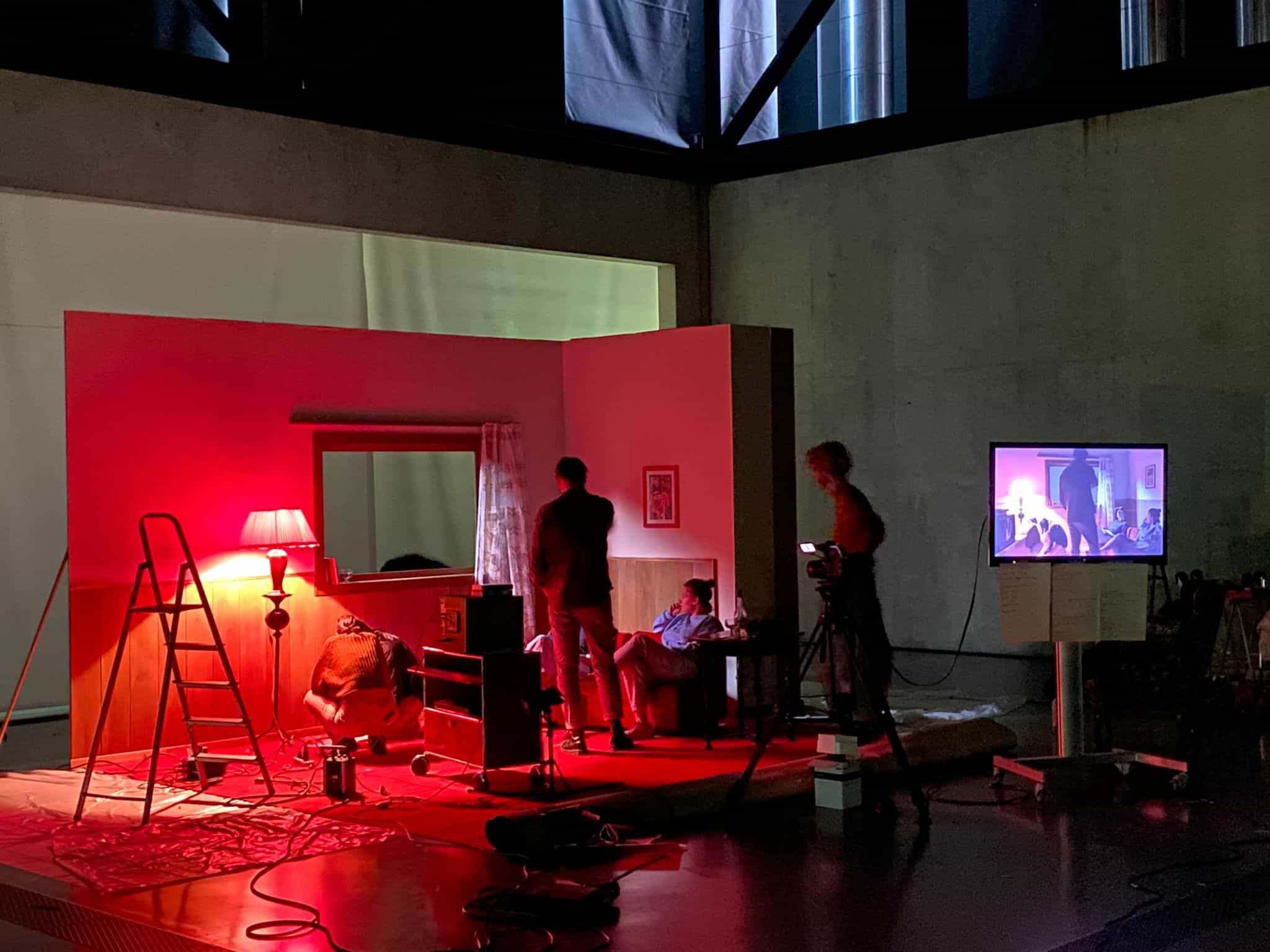SCENES
04.10.2022
- 06.10.2024
Biennale svizzera del territorio, Lugano
Tracing a constellation of urban parking lots, Notti Future creates an itinerary to be followed in nocturnal stages. Through a series of short performative interventions, visitors are led to rethink the function of the parking lot as public space in the contemporary city.
01.02.2024
Spector Books
This book offers a first chronological exploration of A Nocturnal History of Architecture, spanning over 2000 years across different continents and geographies. From the darkness of Greek temples to the lit-up American suburbia, and from moon-inspired Japanese aesthetics to Italian nightclubs, it reveals how human identity and spaces are inseparable from the night.
31.08.2023
Materia Arquitectura No. 24
This essay explores the development of the research project Scènes de Nuit since 2019 through exhibitions, lectures, and workshops, aiming to generate a nocturnal epistemology of architecture.
24.03.2023
- 30.07.2023
EPFL Pavilions, Lausanne
Through the lens of art, the exhibition Lighten Up! On Biology and Time explores the connection of living organisms with the natural cycle of light and dark. The project investigates our daily exposure to light, as well as its dynamics over time, as crucial elements of a healthy and sustainable life in dense urban environments.
14.04.2023
Society of Architectural Historians (SAH), Montreal
The session Night Scenes: For a Nocturnal History of Architecture proposes new night-based historiographies of the discipline, with contributions by Chase Galis, Maria Shevelkina, Amy Chazkel, and Cat Rossi.
04.11.2022
Fashion Show, HEAD – Genève
The scenography for the 2022 HEAD Fashion Show juxtaposes virtuality with physicality, investigating the presence of human bodies in the material world while simultaneously delving into the interaction of avatars in nocturnal virtual spaces.
28.02.2022
- 17.06.2022
HEAD – Genève
Insomnia investigates how nocturnal awakening functions as a space for unexpected narratives, displacements, and architectural emancipation. The studio employs cinematic long takes and scale models as its primary research tools.
28.02.2022
HEAD – Genève
Developed as part of the Master of Arts in Interior Architecture (MAIA) program at HEAD – Genève, this series of theses investigates the role of night in shaping contemporary cities and societies, addressing its significance for architectural theory.
11.03.2022
Grand-Saconnex, Geneva
Nightcrawl offers an exploration of the Grand-Saconnex municipality and its thresholds as day turns into night. The project focuses on how the falling night impacts this part of the city in various ways, encompassing illumination, sound, and the utilization of spaces—residential, industrial, infrastructural, and liminal.
21.02.2022
- 25.02.2022
HEAD – Genève
Movie Set is a workshop led by set designer Florian Sanson, renowned for his work on the sets of Alice Winocour’s Proxima and Leos Carax’s Annette. It constructs a film set for capturing fragments of nocturnal domesticity, artificially recreated from dusk to dawn within the Cube space at HEAD – Genève.
